Every fireworks tutorial begins by emphasizing that finding a location with an interesting foreground is crucial to fireworks photography. However, our priorities were to enjoy a nice Independence Day feast with family and friends, and staking out a location hours in advance wasn’t on the agenda. As it was, we were pushing the stroller through the crowded park as the first bursts were going off and hastily found a clear spot on the grass.
Originally, the stadium lights were right in the middle of the bursts, so I managed to improve my position slightly be moving a few yards away from our group, but I didn’t want to stray too far. I set up my tripod and remote as quickly as I could and fired off a few test shots at f/8.0 with the bulb setting at ISO 100, keeping the shutter open to record two to three bursts at a time. The above exposure was 6 seconds.
I saw fairly quickly that I wanted a lower exposure, since the middle of the bursts were blown out white. I closed my aperture to f/16, since changing the shutter speeds wouldn’t make much of a difference in the brightness of the bursts, only the length of the rays. The shutter speed does make a difference in the foreground brightness, but since my foreground wasn’t especially appealing, I wasn’t interested in preserving it.
This was taken at f/16 with a shutter speed of 9 seconds. This exposure worked well for some shots, but for the bigger, brighter fireworks, I still found the centers were blown out white, so I decided to close my aperture more.
I liked the results at f/29 and kept the aperture there for most of the rest of the show. I closed down just a bit more to f/32 when the fireworks started coming in faster at the end of the show. You can see the small aperture dropped the background out, which was no great loss, and it created a nice starburst effect to the street light in the background.
The entire show lasted around 20 minutes, and had a nice variety of bursts. The ones I enjoyed most in person weren’t necessarily the ones that made the most interesting still images, but the instant LCD feedback was invaluable in choosing how to adjust the settings. With different shows, I had the best results with f/8.0 to f/16 with exposures of 1-3 seconds, but with this show, I needed a smaller aperture and longer exposures just because of our proximity to the bursts and the timing of the show.
This shows that there are no magic settings that will work for all fireworks (my sister said that the fireworks setting on her compact camera didn’t yield the best results), but knowing how and when to manipulate shutter speed vs. aperture is the key to getting fireworks images the way you want them.

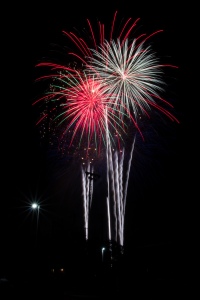
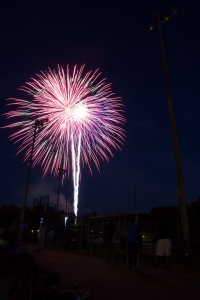
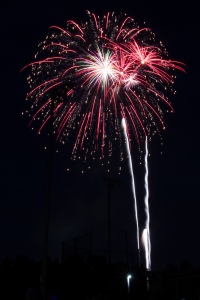
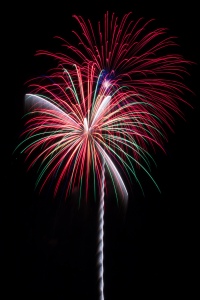
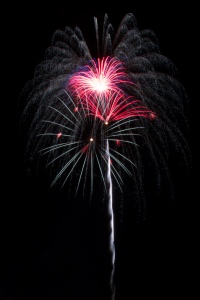
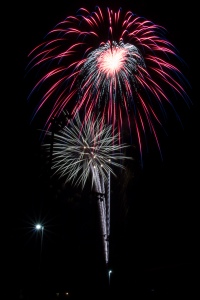
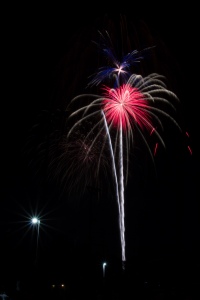








These look great Nancy! I especially like the 1st one of your series set. I’m wondering what lens you used as well. I’m hoping to get some shots tonight!
Thank you! I used the Tamron 17-50mm f/2.8. We were pretty close. Mostly I used it at the 17mm end to make sure the fireworks stayed in the frame. Then I cropped back in for the best composition.